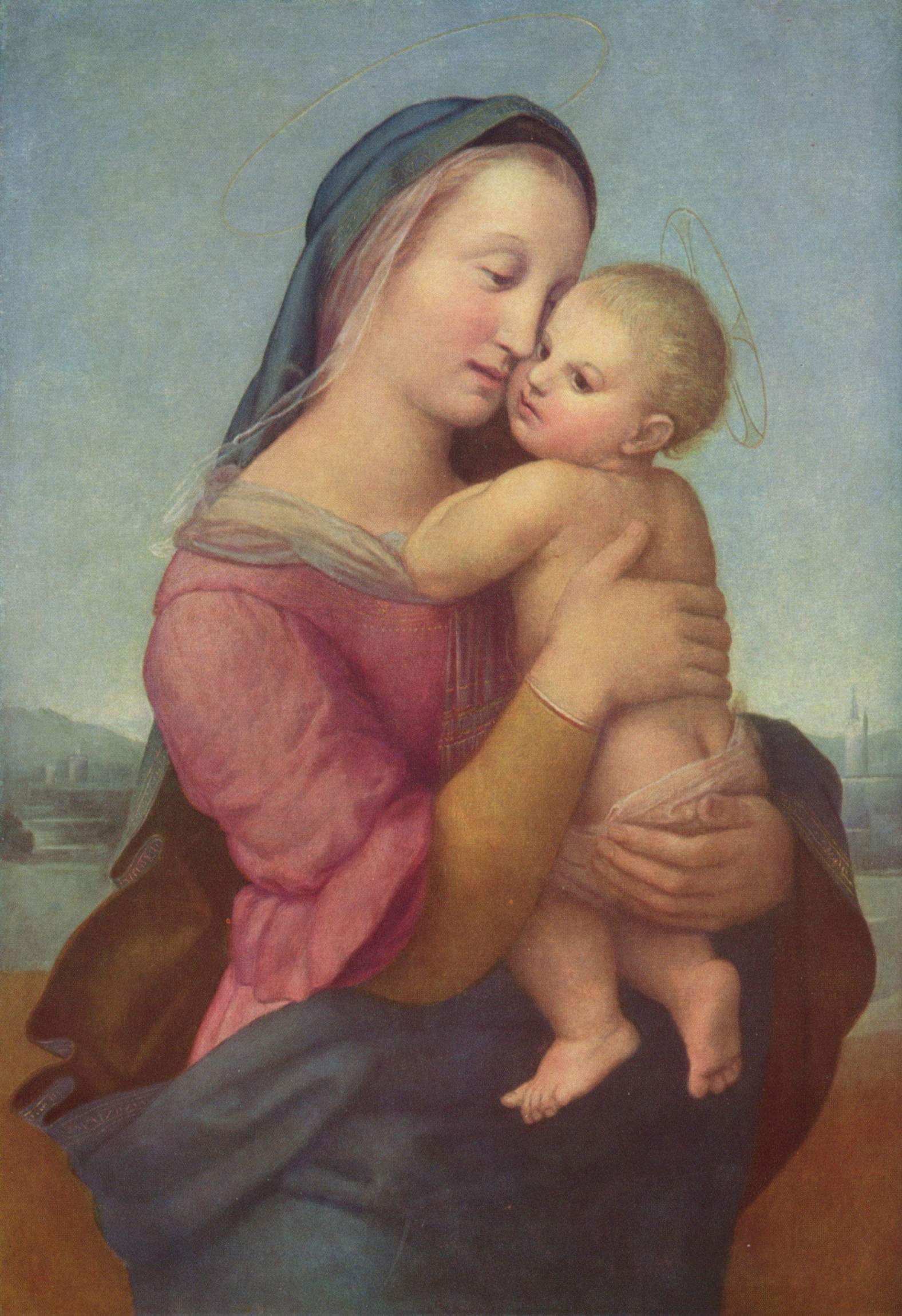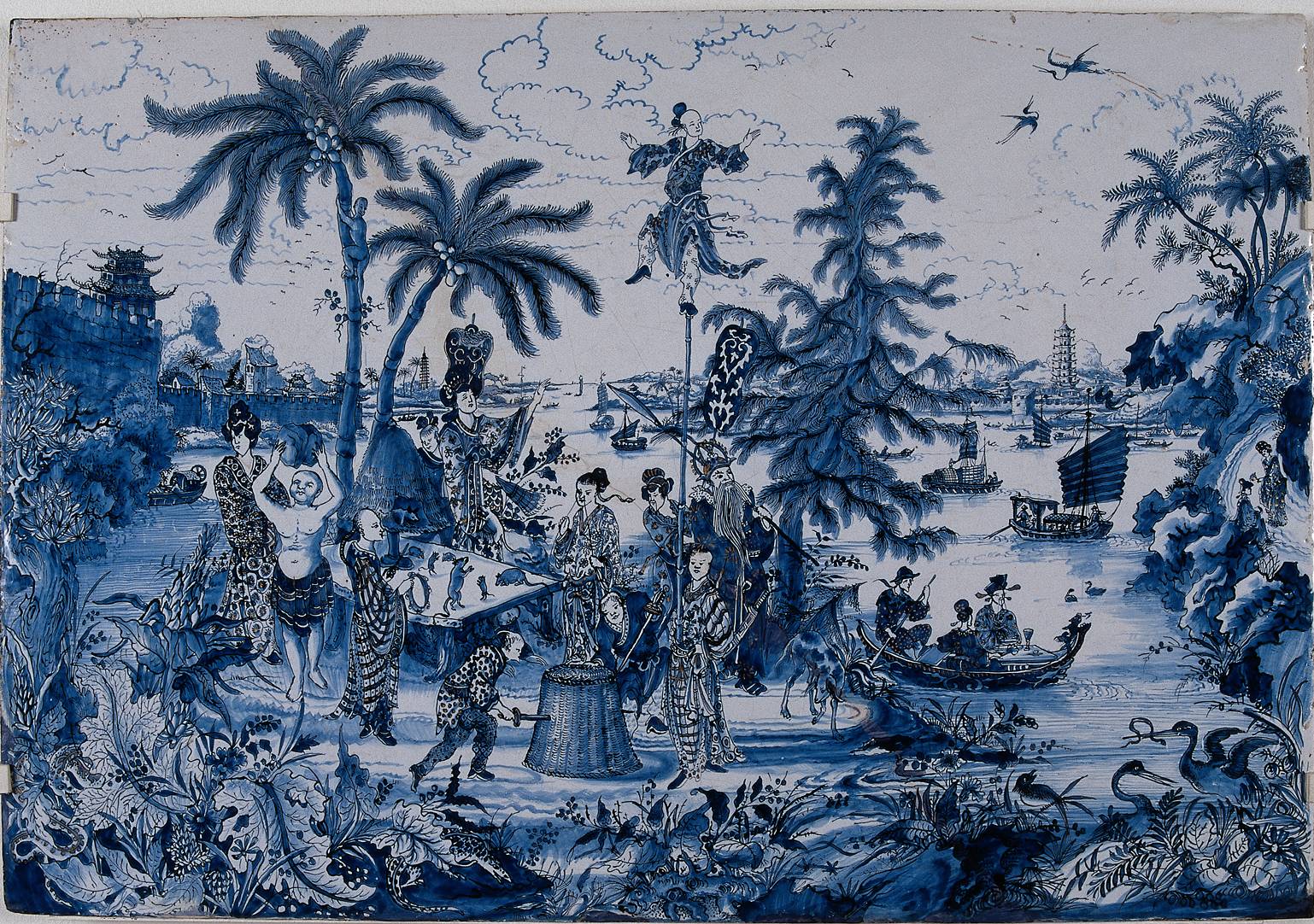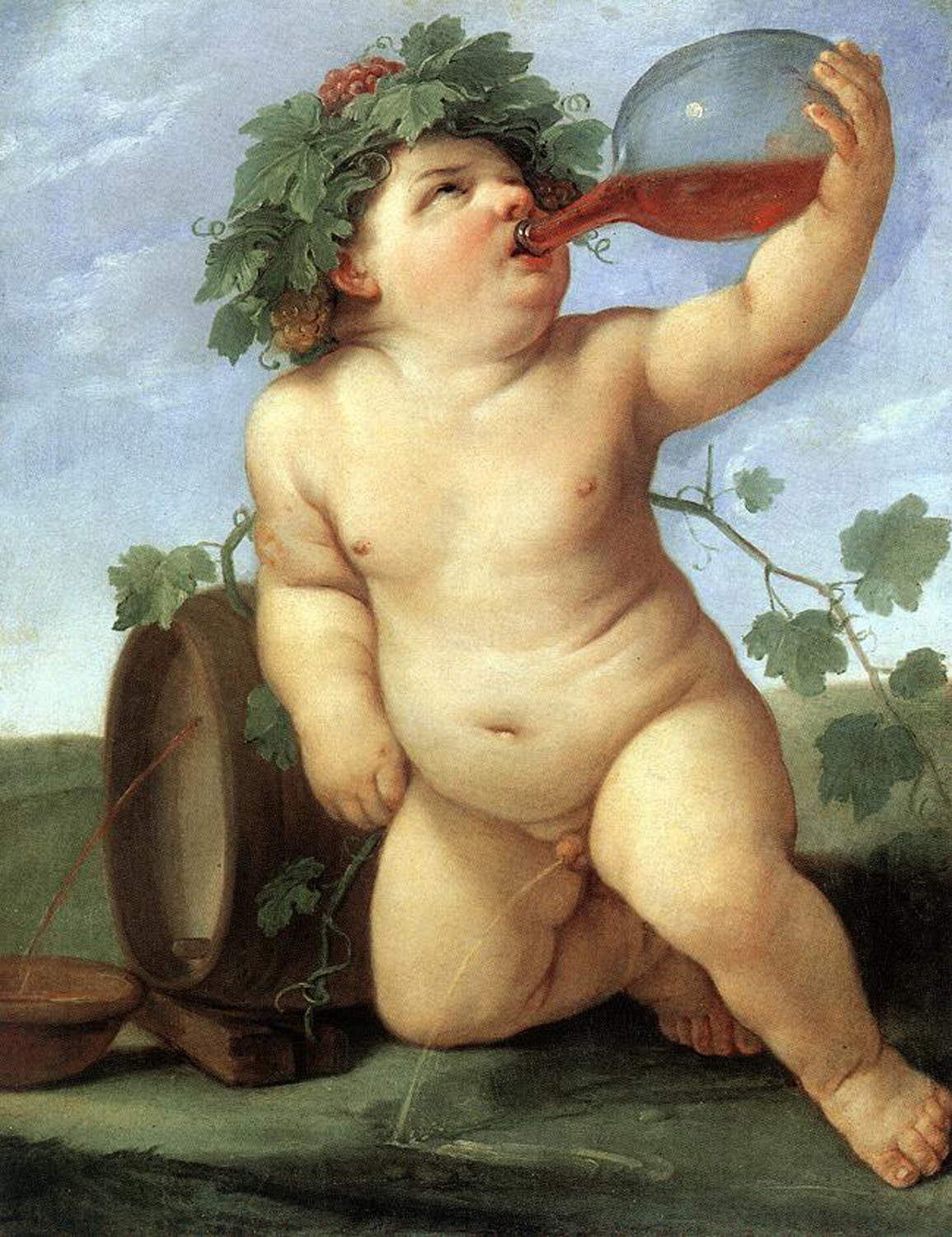1. Hodegetria and Theotokos
Hodegetria is a term for paintings of Madonna and Child. The word derived from Greek literally meaning, “she who shows the way”. Such old paintings, especially, before the renaissance were called Hodegetria. The term still exists in the art communities referring Madonna and Child’s painting.
Theotokos is the Greek name for Mother Mary. The literal translation is “one who gives birth to god”. So, Hodegetria and Theotokos paintings interrelates in technical terms.
Although, it consists Madonna and Child, Hodegetria paintings are a bit different than paintings of Madonna and Child in definition. They include paintings in which Madonna has carried the child Jesus and also points towards Him as the symbol of salvation.
Here is out gallery of Madonna and Child which is different from our Hodegetria gallery.
2. Eleusa (Or Madonna Eleusa)
Eleusa painting also consist Madonna and child. The slight difference is about their posture. IF the Madonna and child’s cheeks are touching to each other, such painting would be called Eleusa or Madonna Eleusa. In Greek, Eleusa means tenderness.
3. Black Madonna
As the term explains, Madonna depicted with black skin is called as the black Madonna. There are few churches and other religious places which holds paintings and sculptures representing black Madonna. Though, there also some paintings or sculptures exist which has blackened due to the deterioration and physical harms.
The concept of depicting Madonna (and also the Child Jesus) with black skin intentionally seems to be very much used during the 12th to 15th century. The reasons for such depictions are not so much clear but the alleged reason is to attract the non-white people towards the religion.
The most known Black Madonna is Black Madonna of Czestochowa.
4. Andachtsbilder
Andachtsbilder is a German word. It translates as devotional images. Andachtsbilder is used in churches and such holy places as the aid for prayers. Andachtsbilder mostly are the sad depictions of the subjects taken from the Christian history and religious beliefs. Whether it is a painting showing a scene from the episode of passion of Christ or a sculpture of Pieta, Andachtsbilder aims to provoke the affection towards the subject (Jesus Christ and Christianity).
5. Icon
In the 12th and 13th century, the religious depictions in any form of art (painting, sculptures, etc.) were called Icon. Today’s meaning of the word ‘icon’ derives from here.
In old times, the paintings mostly represented Jesus Christ, Madonna or the mythological and historical incidents which had some great significance in the history and thus, they represented the whole religious context. Such, art-works began to be called as Icon, deriving the word from Greek word Eikon which means image.
Today, after more than 8 centuries, the term has got broader meaning. Now, we use it to describe anything or person who has achieved a significant status in any context regardless to the fact if it is religious or not.
Icons called “Acheiropoieta” are interesting ones as they are said to be ‘made without hands’, means made miraculously or not made by human.
Only thing to remember, such Icons are not limited only to paintings. A relief or a mural could be called as an Icon.
6. Chinoiserie
Western Art (especially European) heavily influenced by the Chinese themes, styles and culture is called Chinoiseries. It could be a painting, sculpture, relief or an artistic furniture.
Chinoiserie is the imitation or the imaginative depiction of the Chinese cultural or artistic elements by the western artists with western context. Means, most of the time, woman wearning the Chinese attire or set in the Chinese landscape would be western. Though, it is not a compulsory rule.
Chinoiserie is not necessarily a landscape or portrait painting. It could be simple Chinese designs which represents the Chinese conventional art.
7. Screen Painting (Or Silkscreen)
Screen painting is method of print making. It uses stencils, clothes, squeegee and plates to produce a print on any surface.
It resembles to the simple technique in which we put a pre-cut designed paper with different holes on the canvas and spray the color all over it. When the paper is removed (and thrown into waste), the canvas is left with the unique pattern which is formed through holes of the paper.
We could use multiple layers and colors to improve the quality and intricacy of the design (or landscape) for finer output. Here, the technique resembles to the known Japanese print-making technique known as Ukiyo-e.
8. Cherubim
Cherubim or Cherubs are the angelic entities in Christian mythology. They are said to be having a face of human, body of a bull and the wings of the eagles. There are multiple mentions of the Cherubs in various Christian myths and also in the Hebrew Bible.
They are said to be the guardians of the Tree of Life in the Garden of Eden.
9. Costume Study
When a painter makes a painting solely with the intention to study, learn and imitate the appearance of a special garment, cloth, attire or costume, the output or the work of art is called as the costume study.
In such painting, the artist’s attention is very keen on the whole cloth’s appearance and its closeness to the depiction. Artists tries to imitate the reflection (if the cloth is made of shiny substance like silk) and the texture of the cloth in his canvas. If it is a sculpture, he is more concerned to produce the realistic flow and creases in the statue which occurs naturally in a cloth.
The best examples for both type of costume studies are shown here: 1. The Blue boy by Thomas Gainsborough, 2. Pieta by Michelangelo
The Blue boy is, allegedly, a costume study, while Pieta by Michelangelo wasn’t a study but a masterpiece, originally commissioned for French cardinal Jean de Billheres’ funeral.
10. Putto
A putto is male, chubby child with wings in paintings. It is not to be mistaken with any other celestial angelic forms such as Cherubim or angels. They are the independent entities and represents the humanly passion and are totally regardless to religious subjects.
Though, sometimes cupids are painted in the forms of putti (plural of putto). Such cupids are called Amorino (amorini in plural).
Putto’s disconnection with religious grace is depicted in this painting explicitly.
You can read the part 1, part 2, part 3, part 4, part 5 and part 6 of the series.










